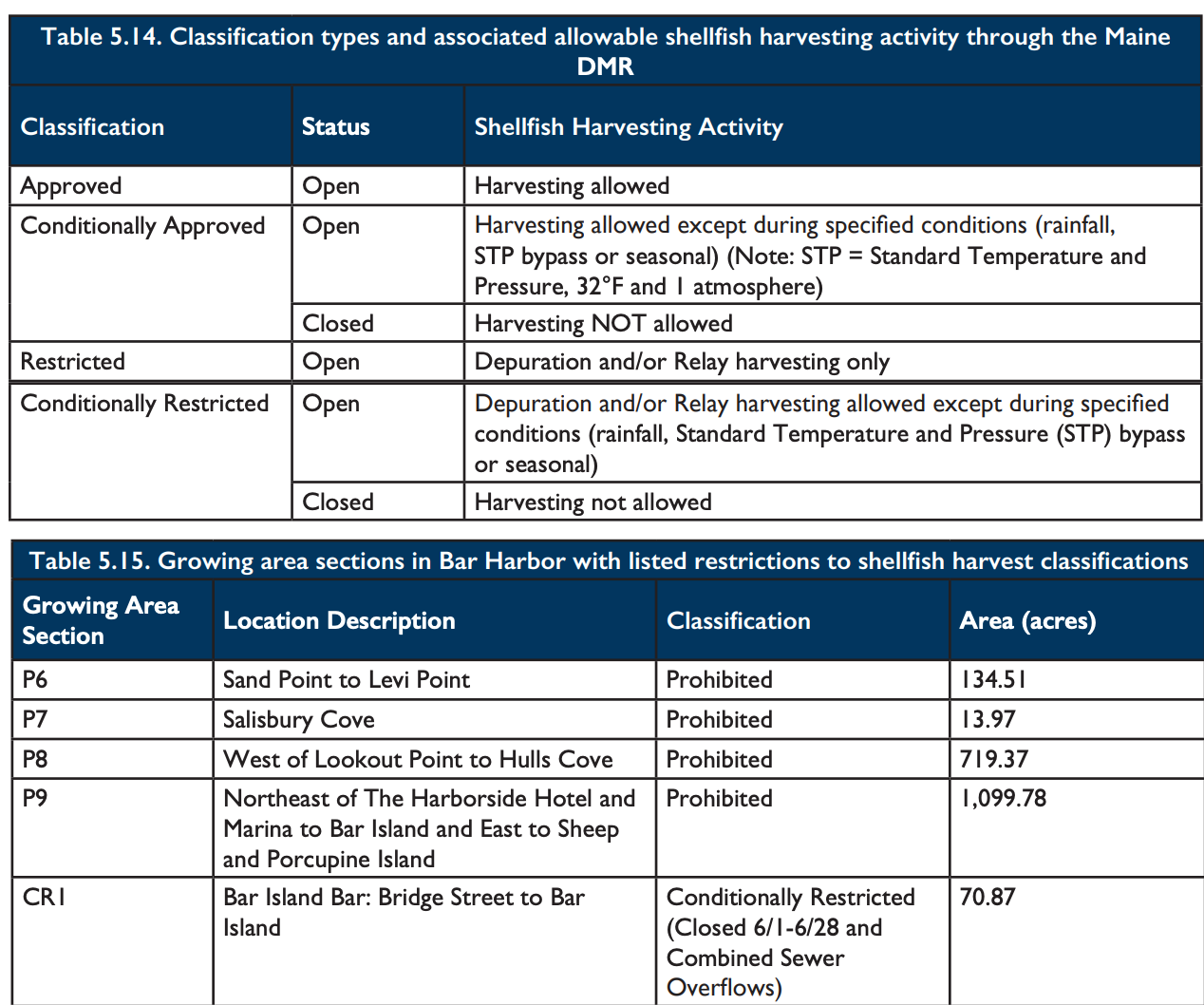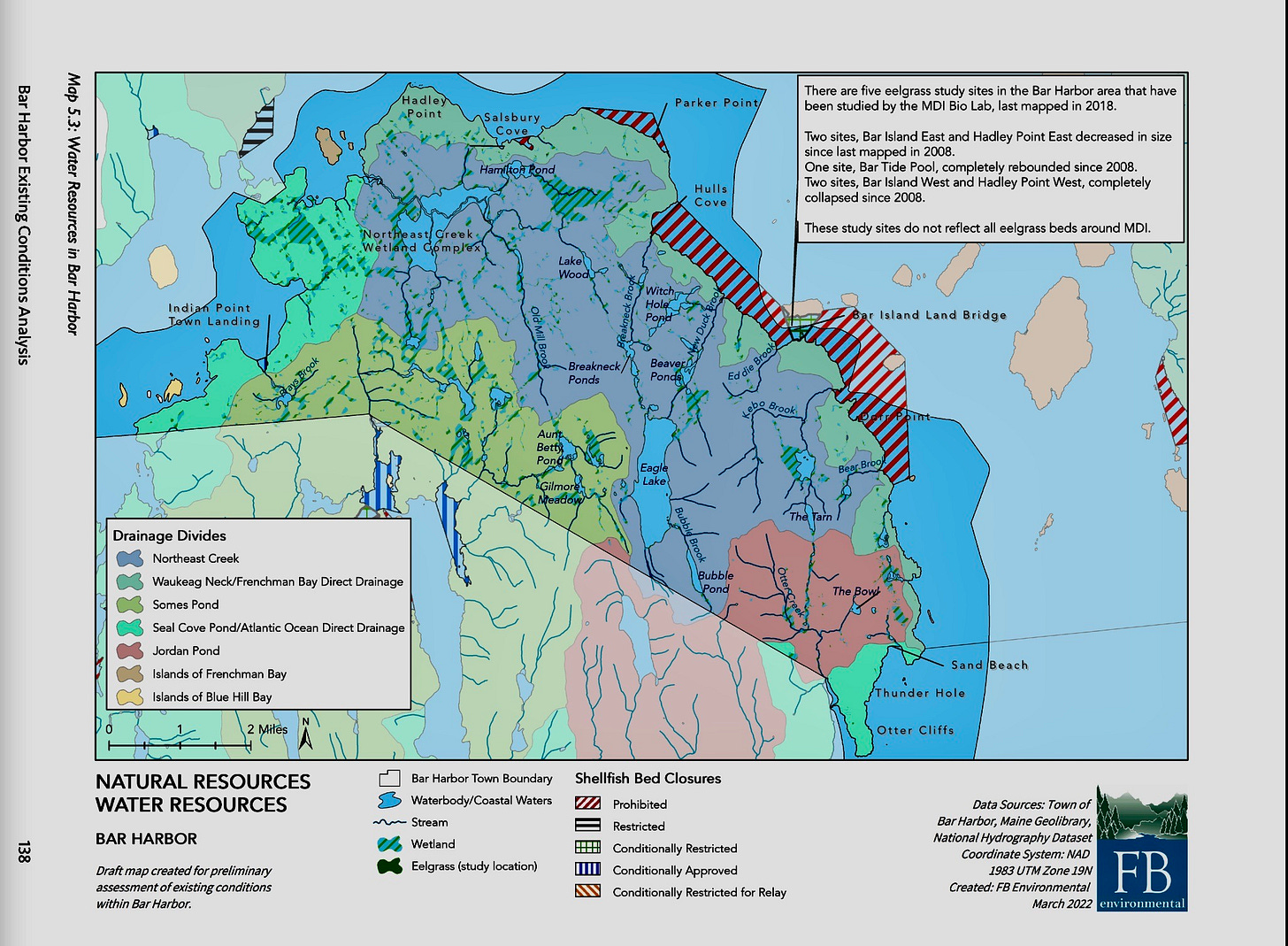How Did That Get In The Water?
Microbial Source Tracking At Two MDI Sites Helps Show the E.coli Culprits
BAR HARBOR—Microbial contaminants cause about 90 million illnesses every year in the United States, and that’s just in the recreational waters. That equates to around $3 billion in medical costs.
And a lot of that contamination?
It comes from feces.
Feces from humans and/or animals gets in the water maybe via wildlife, maybe via a leaking septic system, maybe a dog did her business a little too close to the water and nobody picked it up, maybe from nearby farms.
Feces happens.
The Bar Harbor Marine Resources Committee knows that and also knows that when you understand if contamination is present, you can hep mitigate the impact of that contamination or maybe even locate a source and keep those contaminates out of the water. That keeps the water cleaner, humans and animals healthier, and also keeps those water bodies and areas open.
Bacteria can accumulate within bivalve shellfish. When that happens, it’s dangerous for people to eat those shellfish. A good deal of Bar Harbor (1,967 acres) is not harvestable for shellfish. Bivalve clam harvesting in the last decade has accounted for $125,422. Between 2012 and 2020 lobsters brought in $47,228,320 and mussels $773,216.
The committee took water samples that were collected from two seasonally closed areas, Northwest Cove (Bar Harbor) and Pirate’s Cove (Mount Desert), and sent them to the Department of Marine Resources (DMR) in Lamoine. There were 20 samples collected on ten dates. They collected data off half the samples. The other samples were frozen.
According to a report disseminated to committee members by Bar Harbor Marine Resources Committee Chair Dr. Chris Peterson, “Both locations are closed during the summer due to increased levels of fecal coliform, but the source of the contamination is unknown.”
The samples were then sent to the University of New Hampshire, where Dr. Steve Jones determined whether or not the E.coli’s DNA sequence comes from humans or other animals.
“There’s a lot of presence of dogs. There was hardly any presence of humans. There was none at Northwest Cove,” Peterson told the committee members during a Wednesday meeting. The mammal fecal contamination could also be from beaver or other wildlife.
There was also no presence of deer or cows.
At Pirate’s Cove, mammal and bird contamination was present. Mammals dominated.
The scientists ran a qualitative PCR (polymerase chain reaction), which tries to determine a quantitative amount of the contaminants’ source, seeing if there is more mammal or bird contamination.
What they found for Northwest Cove is that it’s not heavily birds. It’s mammals and it’s not humans. There was actually no goose contamination. This is despite the fact that there are a lot of geese in the area and some at the meeting recalled wiping out on a bicycle on goose feces. There is a development above the cove where dogs are family pets. A dog relieving itself anywhere in the watershed could work its way into the water, David Dunton, a commercial clammer, said.
“There are a lot of questions unanswered,” Peterson said, “but birds don’t seem to be a problem.”
The committee discussed making a sign about how any dog defecation should be picked up afterwards so that local clammers can keep clamming. They also discussed other signs displaying harbor shellfish species and specifying licenses needed as well as explanations on sizes and harvest amount for legal recreational digging.
ANNUAL REPORT TO DMR AND JANUARY 3 REPORT TO TOWN COUNCIL
Petersen and Harbormaster Chris Wharff discussed the annual report to the state agency. Petersen said that the committee and others put in 580 hours of conservation and volunteer hours in 2022. There are not currently any areas to close down to harvesting he said.
Petersen added that marine resources is meant to be comanaged between the state and municipalities and there should be cross talk between towns and the state, but that often doesn’t occur. The annual report, he feels, is a lost opportunity. It’s not an onerous document, but it’s also not very useful, he said.
In early January, Petersen gave a summary of work in Otter Creek to the Town Council and also brought up ethics committee work in the town. The Marine Resources Committee like the Cruise Ship Committee is a co-management committee with skin in the game, he said.
He said that they are playing the ethics rule by the book like with commercial harvesters coming to the committee and talking about it in a co-management style.
COMPREHENSIVE PLAN
Petersen also asked committee members to peruse the natural resources section of the town’s comprehensive planning documents. The town is currently undergoing a revision of this plan. He mentioned that there is no summary about the working waterfront. He’s asked a representative to come talk to the committee and its next meeting.
UPCOMING LEGISLATION
Petersen also disseminated a quick list of legislation that might be relevant to the committee:
“The text and status of any bill can be accessed via: https://legislature.maine.gov/bills/
LD 61 An Act to conserve coastal habitat by restricting rockweed harvesting on private property (Eaton)
LD 581 An act to assist municipal shellfish conservation programs (Daughtry, Cumberland)
LD 487 An act to establish coastal waters and submerged lands regional planning commissions (Williams)
LD 586 An act to protect Maine fisheries from the effects of industrial recirculating aquaculture operations (Bebe-Center, Knox)
LD427 An act to authorize a general fund bond issue to invest in research, development and commercialization in Maine’s marine technology and aquaculture sector (Rielly, Westbrook).
LD 370 An act to protect marine resources in Maine (Reny, Lincoln)
MORE RESOURCES
https://www.epa.gov/sciencematters/microbial-source-tracking-how-did-get-there
Link to external Comprehensive Plan page
Currently released Comprehensive Plan documents.












